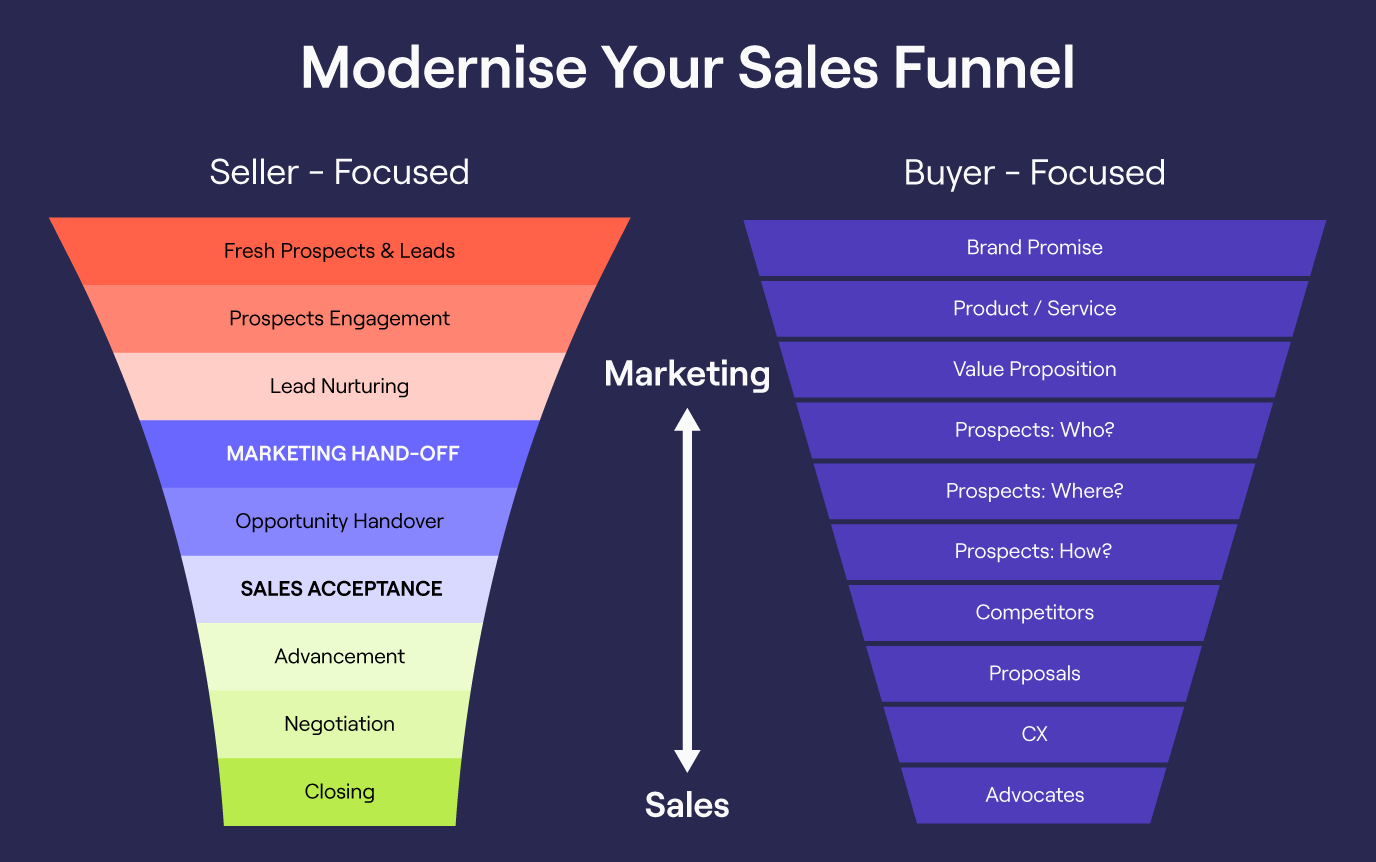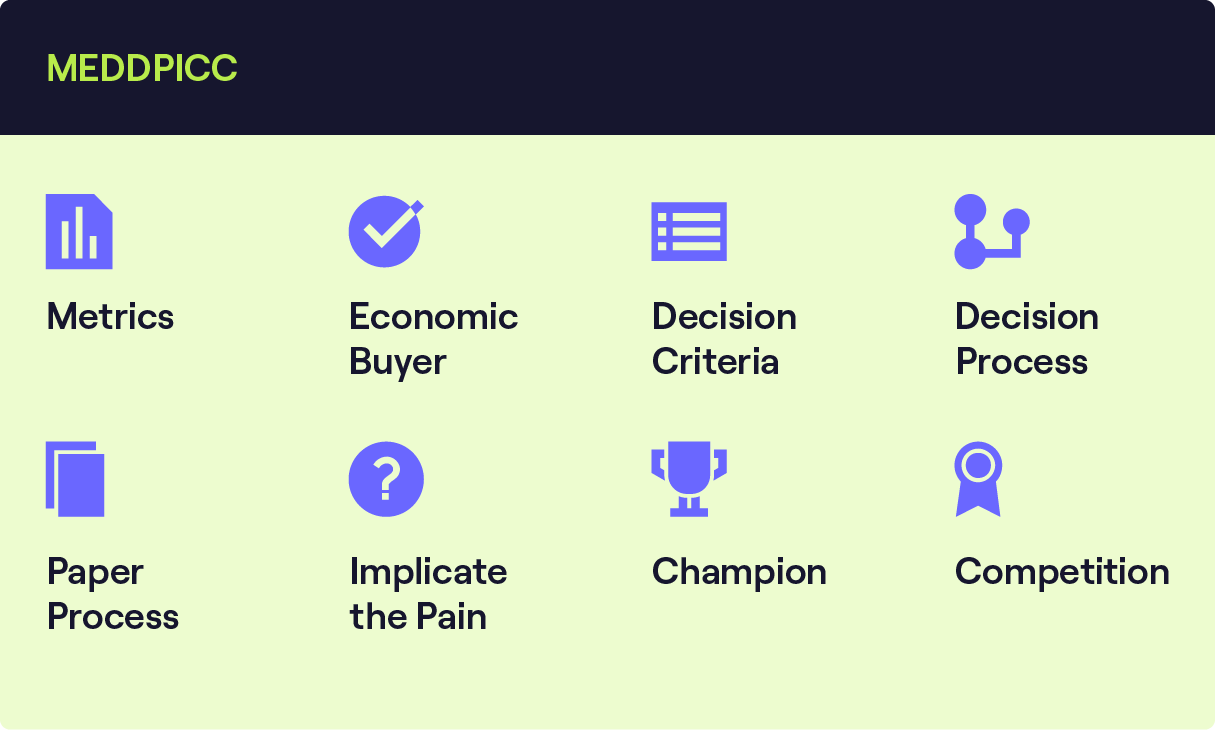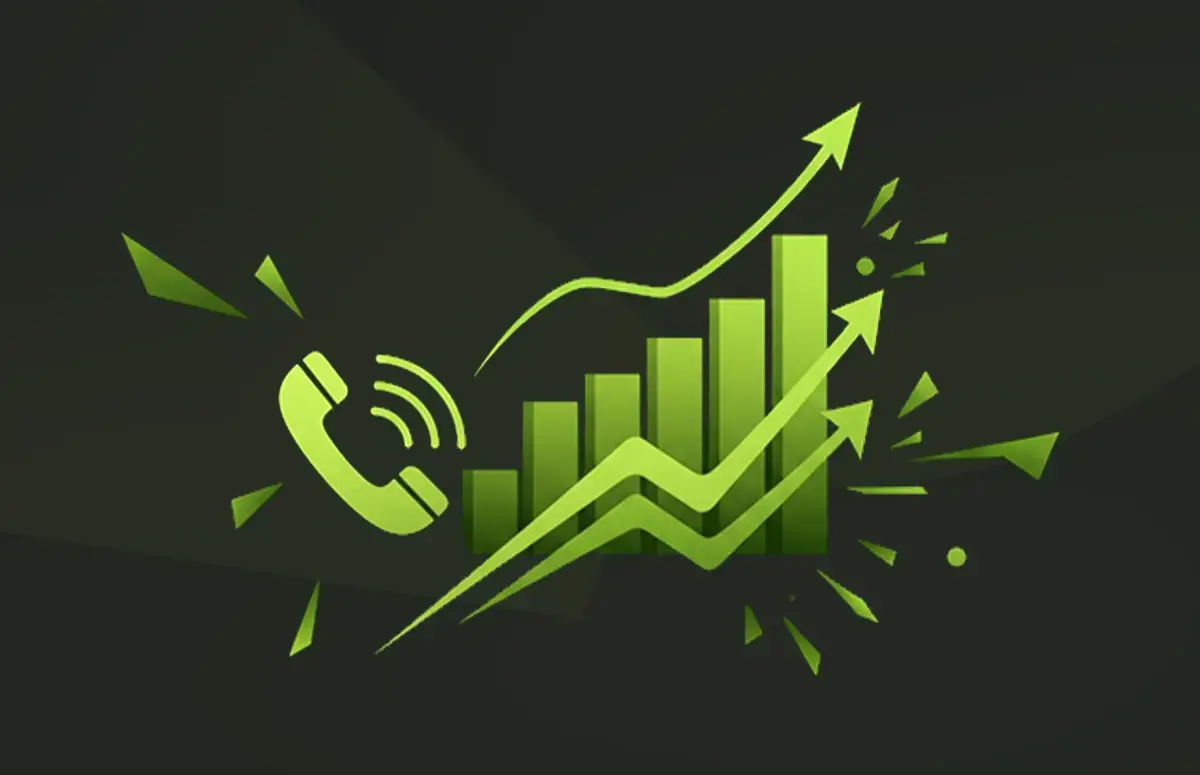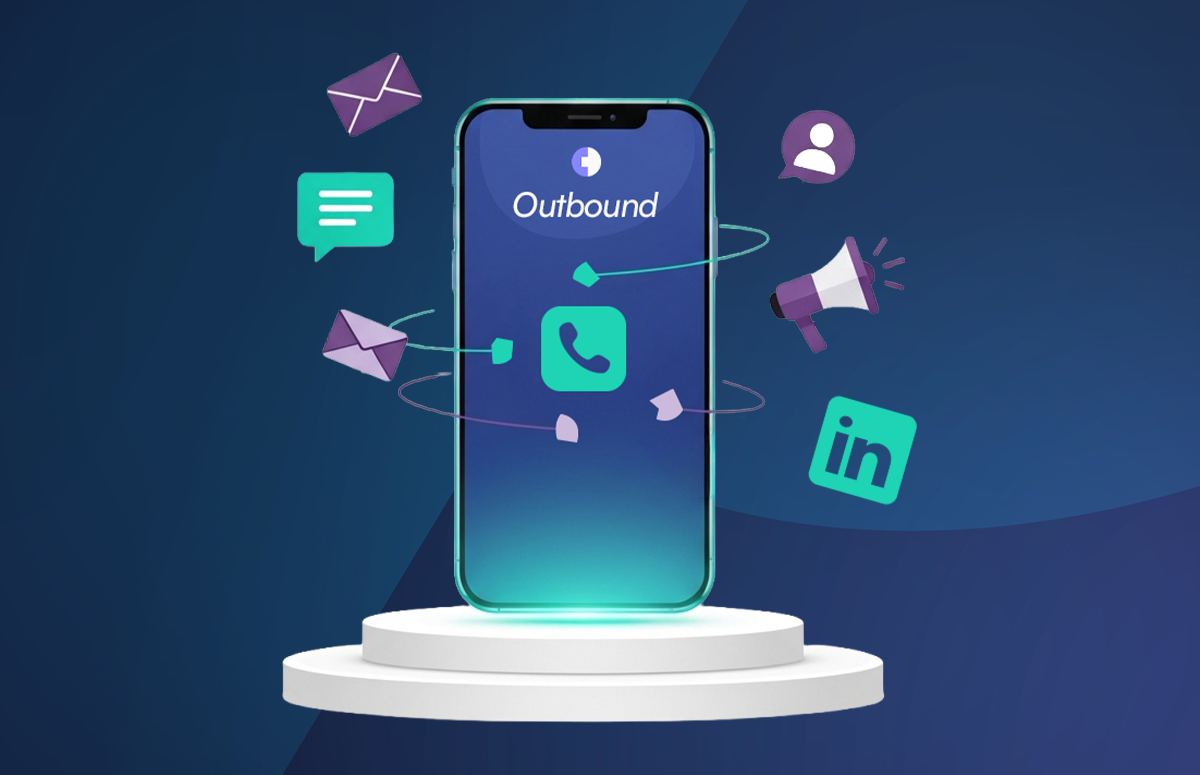The Modern Sales Funnel: How to Create & Measure for Conversions
It’s time to prioritise your buyers’ needs with a modern sales funnel.
Gone are the days when sellers can push buyers into a sales process and hope for the best.
Buyers expect far more nowadays, and your sales funnel has to reflect that. And that means a shift in focus from the seller to the buyer’s needs.
For example, not forcing prospects to make decisions they’re not ready to make - just yet.
In this article, we’re sharing insights from sales leaders who’ve seen the impact a modernised, buyer-centric sales funnel can have on a pipeline first-hand 🚀
We’ll also share tactical ways you can modernise your sales funnel.
Let’s get started 👇
The importance of a modern sales funnel
Your sales funnel sets the potential course your buyers will go through when they express interest in your product or service.
The key thing to note here is that the buyer is on the journey - not the seller. So frame the process around them and what they want to get out of it.
It seems obvious. But even today, B2B buyers still feel as though sellers aren’t considering their needs in the process:

So, if this is the problem, what’s the solution?
It comes down to steering away from an inward-looking process. Here’s a useful graphic from The Buyer-Focused Selling News’ LinkedIn newsletter👇

The key takeaway here?
A modern sales funnel focuses on building trust at every stage.
Sylvia Farag, Founder of Farag Consulting & Coaching, said:
“The modern sales funnel is customer-centric and considers the experience of the customer post-sale too. We know this is the case with sales teams often being separated into hunter (a focus on new business) and farmer (a focus on existing business) teams.”
“A seller needs to effectively qualify a prospect and deeply understand their pains, gains, and motivators. They also need to make every interaction valuable to the buyer.”
Janis Zech, Founder & CEO of Weflow, agreed:
“From awareness through to renewal, buyers want a seamless experience that’s centred around how they can drive ROI going from their current to future state.”
How can you modernise the sales funnel?
It can be easy to lose focus on maintaining buyer-centricity at every stage of the funnel. Especially when a deal is gaining momentum.
But here’s the thing.
If you don’t maintain this mindset, and if your team loses focus, it can be the reason why an important deal slips through your fingers.
Here’s how you can ensure your sales funnel aligns with the modern buyer at each stage of the funnel ⬇️
Stage 1: Awareness
Sean Walsh, CEO & Founder of Pilot Passion, said:
“At the awareness stage, buyer-centricity entails creating content that is relatable, informative, and that aligns with the buyer’s intent.”
“This is the stage to help potential buyers understand how your offerings can help them solve particular pain points.”
He added:
“It’s about empowering potential buyers with valuable, accurate, and accessible information. This enables them to better navigate product and brand discovery, which can often be confusing.”
In theory - this seems easy.
But even today, with the amount of information available, sellers still struggle to understand who they’re selling to.
Frida Ottosson, our US VP of Sales, shared why:
“My team is selling to Directors, VPs etc. The team hasn’t been in that role, so it can be difficult.”
“To help bridge the gap, I’ve been running a ‘meet the persona day’ with my team. We recently brought in a CRO and had a fireside chat with her.”
It was about asking questions like:
- How do we get your attention?
- What do you care about?
- What does your day-to-day look like?
Frida added:
“This session was super helpful. I also saw a few light bulbs turn on - it helps sellers not to act like robots on the discovery call. Because there’s an intended understanding behind the question being asked.”
Now, how do you know your approach is working at the top of the sales funnel?
How do you know your approach is catering to the needs of your buyers?
Abhishek Shah, Founder & CEO of Testify, said:
“Track the level of engagement through various touchpoints (emails, social media interactions etc). This can provide valuable insights into the buyer’s interest and commitment.”
Stage 2: Consideration
When it comes to a modern selling funnel, it all comes down to helping buyers navigate their options.
Sean said:
“Offer personalised experiences that support buyers in evaluating their options.”
“For example, consultations, free trials, and personalised product demos. Help them understand what your product or service can do for them compared to other market options.”
How your team approaches product demos is particularly useful to think about during the consideration stage.
Chris Orlob, CEO at pclub.io, identified that the best demos are those that don’t run like one.
In other words, they’re entirely focused on potential customers:
“When we train sales organisations that are struggling with demos, it’s because they’re very product-oriented. The conversation will usually flow along the lines of ‘You can click around and do this, that, etc’.”
“Instead, the customer should be at the centre of the demo - they’re the hero of the story, not the product. The product demo should be positioned in a way that enables the customer to alleviate a pain point or embark on an opportunity that they wouldn’t be able to do otherwise.”
Chris offered some examples of how sellers can be customer-centric in their demos:

Bring them through a specific flow, and then ask:

At this stage of the funnel, there’ll also be a lot of different stakeholders, all with competing priorities and questions.
Therefore, it’s crucial to consider how your team is approaching communication with these individuals.
Jonathon Ilett, our Global VP of Sales, said:
“We run deal review sessions with all of Cognism’s C-Suite to accelerate our big deals. And we make sure to do this sooner rather than later to identify where help is needed.”
“For example, the Chief Product Officer (CPO) might need to be involved to support the deal, to clarify how a specific feature works.”
Stage 3: Decision
Just because a customer has signed doesn’t mean the job is over.
If anything, the decision stage is arguably the most important at which your team can be customer-centric. Especially if you’re thinking about bringing in clients with high retention.
Sean said:
“At this stage, you should target your efforts towards showing the buyer that they’ve made the right choice by buying from the company.”
“Provide responsive customer support, a mobile-responsive website, and post-sale customer service.”
Working closely with your customer success team and implementing an omnichannel support platform is the best way to ensure happy and loyal customers.
You might find this article on customer adoption helpful.
Modern sales funnel metrics to track
A huge part of a modern-day sales funnel is the metrics and data you track. They allow you to spot early signs of a leaky sales funnel.
To start, let’s dive into…
The BANT debate
Proceed with caution when thinking about BANT, especially when thinking about the modern funnel perspective.
It’s not that BANT is wrong - it’s more the fact that some aspects of it will be relevant, depending on the stage of the funnel your team will be in.
Sylvia shared this:
“Yes - a combination of SDR and AE will inevitably need to understand each element of BANT in order for a deal to progress through the funnel. But it’s no longer being used as the set agenda, per se.”
For example, Kyle Coleman, SVP of Marketing at Clari, said:
“It’s unnatural and presumptuous for an SDR to start talking about budget, especially if it’s an outbound sourced opportunity. Because they’ve not even earnt the prospect’s time for a demo yet.”
“At Clari, we’re way more about need (‘N’ in BANT). Where does the prospect get stuck at a personal level and then a company level?”
MEDDIC & MEDDIPICC
Here’s a quick reminder of MEDDIPICC 👇

Qualification methods like this are a little more sophisticated and focused on the customer. It also provides a more malleable approach when targeting different segments.
Sylvia provided her two cents on this:
“Depending on the specific GTM strategy, customisations to qualification methodologies also differ by segment, SMB, Mid-Market and Enterprise.”
“Some organisations prefer teams supporting SMBs to undergo a more comprehensive qualification process. Since volumes tend to be higher, AEs want to ensure a prospect is well qualified before reaching them.”
“On the other hand, for MM-ENT prospects, AEs might want to take the lead on qualification and nurture the relationship with the prospect.”
She added:
“Instead of all of MEDDIC just being covered by sales development teams, it might simply be to qualify for the ‘I’ - identify pain.”
“If there is a need or pain to be solved, passing it on to an AE for larger accounts could be sufficient. Each business is different, and the goal is to do whatever makes the experience customer-centric.”
Customer-centric commission plans
Sean offered three ways leadership can instil and reward customer-centricity for B2B sales teams:
1. Incentivise long-term customer success
“Reward sellers not only for closing deals, but also for achieving customer success metrics such as customer satisfaction, retention rates, or upselling opportunities.”
2. Emphasise relationship building
“Introduce commission structures that recognise and incentivise sellers to establish strong customer relationships. For example, customer loyalty, referrals generated, or the depth of customer engagement.”
3. Incorporate buyer feedback
“Encourage sellers to actively seek feedback from buyers and tie it to their compensation. This can incentivise sellers to understand the buyer’s perspective better and make necessary adjustments.”
Listen to Redefining Outbound
And there you have it! That’s how you can create a modern sales funnel. The common theme here has been buyer-centricity.
If you’re keen to find out more, check out this episode of our Redefining Outbound podcast.
Frida sat down with guest Khris Fenton, VP of Sales Development and Partnerships at Altrata. They covered the importance and the current state of buyer centricity. Plus, find out whether AI will help or hinder the concept.
Click ▶️ to listen.
/Cold%20calling%20strategy/cold-calling-strategy-card.webp)

